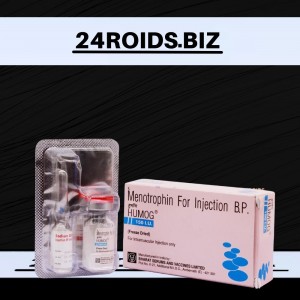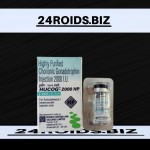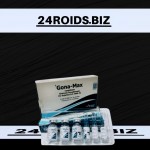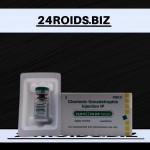Follicle stimulating Hormone…………..75 I.U. / 150 I.U.
Luteinizing Hormone………………………75 I.U. / 150 I.U.
Added substance: Mannitol B.P.
Di-sodium Hydrogen Phosphate B.P.
Sodium Dihydreogen Phosphate B.P.
One I.U. of human urinary FSH and one I.U. of human urinary LH are defi ned as the activities contained in 0.11388 mg and 0.13369 mg of the 1st International Standard respectively.
PROPERTIES: karma-HMG (Human Menopausal Gonadotrophin) is a hormonal substance containing FSH and LH in a ratio of 1:1. In the female, karma-HMG stimulates both the growth and the maturation of follicles, it induces an increase in the oestrogen levels and a proliferation of the endometrium. In the male, karmaHMG stimulates the spermatogenesis by acting on the production of the androgen-binding protein in the seminiferous tubules of the sertoli cells.
INDICATIONS: Women: karma-HMG and subsequently karma-HCG (Chorionic Gonadotrophin Injection) are indicated for the induction of ovulation in the amenorrhoeic patient or anovulatory women with regular or irregular cycles. Men: karma-HMG with concomitant karma-HCG (Chorionic Gonadotrophin Injection) therapy is indicated for the stimulation of spermatogenesis in men who have primary or secondary Hypogonadotrophic hypogonadism.
Men: Treatment should begin with karma-HCG (Chorionic Gonadotrophin Injection) 2000 I.U. 2–3 times a week to produce evidence of adequate masculinisation. If the response to karma-HCG (Chorionic Gonadotrophin Injection) is only androgenic, karma-HMG (1 vial 3 times a week) and karma-HCG (Chorionic Gonadotrophin Injection) 2000 I.U. (twice a week) are required to be administered.
CONTRA-INDICATIONS AND WARNINGS:
Women: karma-HMG therapy is precluded when an effective response cannot be obtained e.g. Ovarian dysgenesis, Absence of uterus, Premature menopause, Tubular occlusion. Men: Patients with elevated endogenous FSH levels indicative of primary testicular failure are usually unresponsive to karma-HMG and karma-HCG (Chorionic Gonadotrophin Injection) therapy. Appropriate treatment should fi rst be given for hypothyroidism, adrenocortical defi ciency, hyperprolactinaemia or pituitary tumour. An acceptable semen analysis should be available before karma-HMG treatment. Adherence to the recommended dosage and monitoring schedules will minimise the possibility of ovarian hyperstimulation. Excessive oestrogenic response to karma-HMG do not generally give rise to signifi cant side effects unless karma-HCG (Chorionic Gonadotrophin Injection) is given to induce ovulation. Hormone assays will detect an excessive oestrogen response to karma-HMG and karmaHCG (Chorionic Gonadotrophin Injection). In such cases karma-HMG administration should be withheld. The incidence of multiple births following karma-HMG / karma-HCG (Chorionic Gonadotrophin Injection) therapy has been variously reported between 10% and 40%. However, the majority of multiple conceptions are twins. Pregnancy wastes by abortion is higher than in a normal population but comparable with the rates in woman with other fertility problems. The risks of congenital abnormalities are not increased by karma-HMG.
SIDE EFFECTS: In the female, a local reaction at the injection site, fever and arthralgia have been observed in rare cases. In the male, a combined treatment with karma-HMG and karma-HCG (Chorionic Gonadotrophin Injection) may cause gynecomastia.






